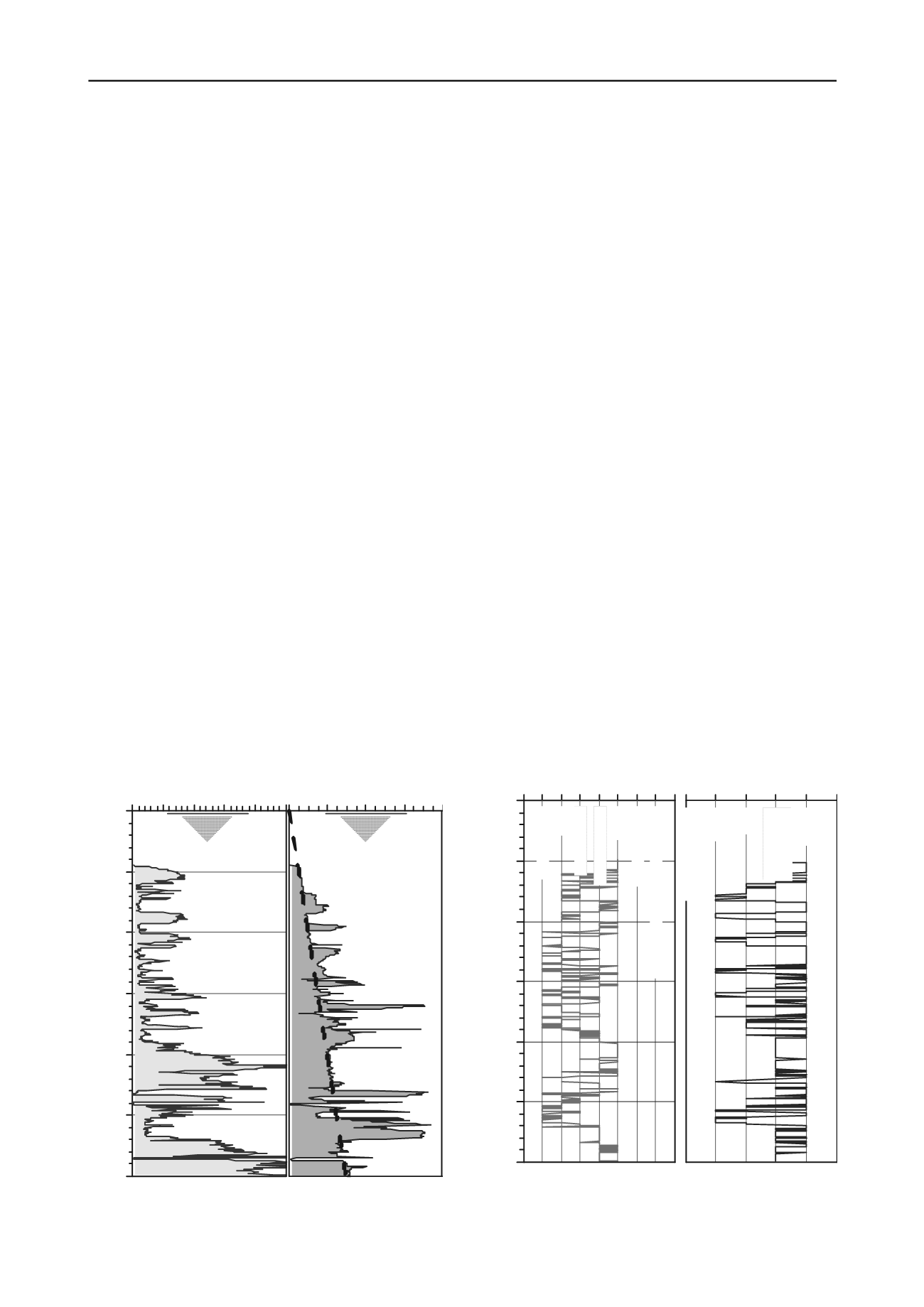
3327
Technical Committee 210 + 201 /
Comité technique 210 + 201
monitored using an advanced technique known as persistent
scatterer interferometry (PSI), based on satellite-borne remote
sensors. As explained in Tosi
et al.
(2012), the method is based
on the identification and exploitation of individual radar
reflectors, or persistent scatterers (PS), that remain coherent
over long time intervals so as to develop displacement-time
series. A significant advantage of PSI is represented by the
possibility of detecting displacements with very high spatial and
temporal resolution. According to ENVISAT ASAR and
TerraSAR-X satellite images acquired from April 2003 to
December 2009 and from March 2008 to January 2009
respectively, displacements of Venetian coastal structures
turned out to range from a few mm/year for breakwaters and
jetties older than 10 years to a maximum of 50-70 mm/year in
the case of new or recently reshaped structures. Details on the
whole PSI monitoring performed from Lido to Chioggia inlets
are provided in Tosi
et al.
(2012).
In this paper, we will focus our attention only on the long-
term vertical displacements measured from March 2008 to
January 2009 at the Malamocco inlet, with special reference to
the 1280 m-long, curved breakwater built in recent years just
outside the inlet. This structure has shown settlement rates that
vary in the range 5÷25 mm/year, with the higher values
observed close to the seaward edge of the breakwater.
In order to apply the method described in section 3 and
determine reliable values of
C
αε
, profiles of four piezocone tests
located along the breakwater (Figure 2) have been interpreted.
As an example, Figure 3 shows the corrected cone resistance
q
t
and pore pressure
u
measurements from CPTU M2, taken to 60
m depth.
All the soundings detail a complex soil profile of alternating
silty sands, silts and silty clay, as recognized from prior studies
performed at different sites of the Venetian lagoon. The pore
pressure profiles rarely follow up the hydrostatic level, at times
fall below it, but more often describe a slight contractive
response, with generally moderate values of Δ
u
.
Such stratigraphic complexity, typical of the whole Venetian
lagoon subsoil, is confirmed by the well-known and newly
revised piezocone-based classification framework proposed by
Robertson (2009), aimed at identifying the
in situ
soil behavior
0 5 10 15 20 25
q
t
(MPa)
60
50
40
30
20
10
0
Depth (m)
0.4
1.2
u
(MPa)
u
0
u
W.T.
W.T.
Figure 3. CPTU M2 log profiles.
type (SBT). Results from the application of the method to
CPTU M2 data are shown in Figure 4. According to the SBT
profile, the approach seems to predict a more pronounced clay-
like behavior (zone 3) in comparison with the stratigraphic
profiles obtained from nearby boreholes. Very thin layers of
peat (zone 2) are at times detected, in particular from 22 to 48 m
and from 51 to 53 m depth.
Results from the rather sophisticated classification approach
developed by Schneider
et al.
(2008) are also plotted in Figure
4. This method, based on the normalized cone resistance (
Q
=
(
q
t
-
v0
)/
'
v0
) and the stress normalized excess pore pressure
(
u
/
'
v0
), was primarily derived to aid in separating whether
cone penetration is drained, undrained or partially drained,
hence the approach is recognized as superior to other
classification charts when evaluating piezocone measurements
in clayey silts, silts, sandy silts and transitional soils.
According to such classification framework, a large number
of the CPTU M2 data fall in domains 1a and 3, this latter
including a wide variety of mixed soil types.
Finally, Figure 5 provides the profile of the computed
C
αε
, as
obtained from eqs. (2) and (3). Similar profiles have been
obtained from the other available piezocone tests M1, M3 and
M4. As evident from Figure 5, both formulations result in
similar estimates of
C
αε
, although eq. (3) seems to provide lower
values in the upper sandy layers.
In particular, the secondary compression coefficient in silts
and silt mixtures (SBT zone 4) turns out to generally vary
between 0.0015 ÷ 0.0035, rarely exceeding 0.004. Typical
values of
C
αε
in sand (SBT 6) fall in the interval 0.0005 ÷
0.0008, whilst the range for sand mixtures (SBT 5) is somewhat
higher (0.0007 ÷ 0.0018). Finally,
C
αε
in clays-silty clays has
been found to generally vary between 0.002 ÷ 0.006. It is worth
observing that the computed values are in good agreement with
the reference values of
C
αε
derived from interpretation of long-
term settlements observed at the Treporti Test Site.
Secondary compression of thin layers of peat, occasionally
present throughout the stratigraphic profile, is described by
rather high values of
C
αε
, such as 0.008 to 0.015. However, it is
worth remarking that eqs. (2) and (3) have been not calibrated
on such soil class, hence in this case the computed values of
C
αε
cannot be applied without a great deal of uncertainty.
1 2 3 4 5 6 7 8 9
Soil Behaviour Type Zone
(Robertson, 2009)
60
50
40
30
20
10
0
Depth (m)
SoilType
(Schneider et al., 2008)
1c 1b 1a 3 2
Sands
Transitional
soils
Silts
Clays
Sensitive Clays
Organic Soils
Clays
Silt mixtures
Sand mixtures
Sands
Gravelly sands
Very stiff sands to clayey sands
Figure 4. CPTU-based classification methods applied to test M2.


